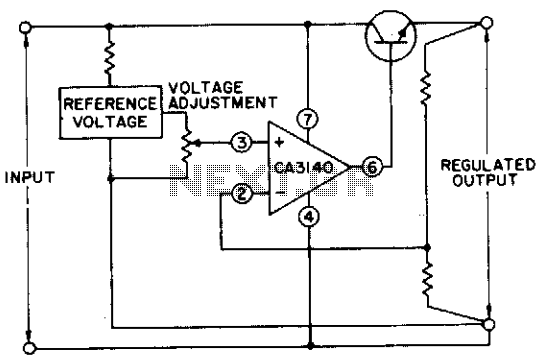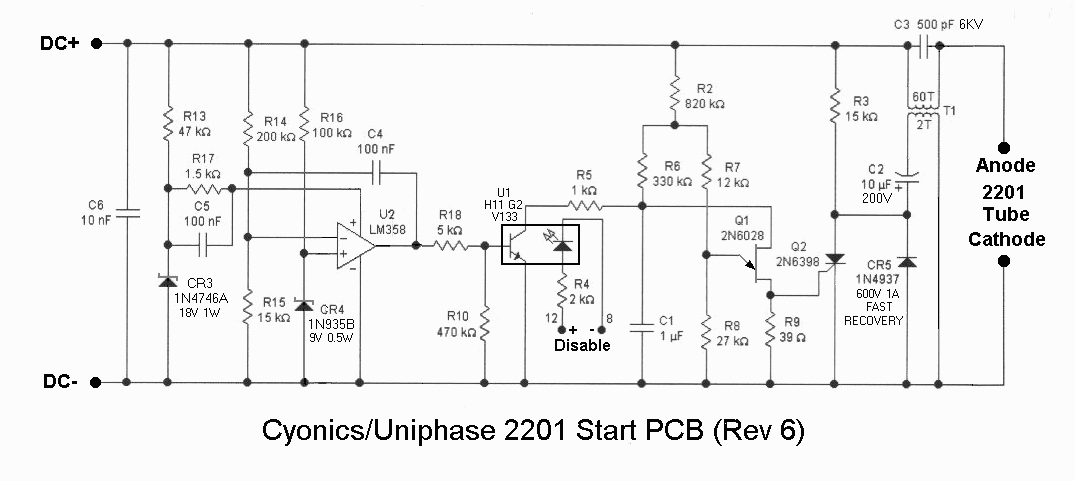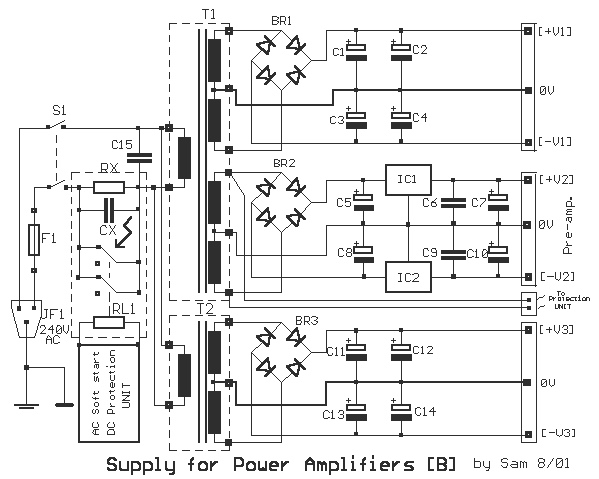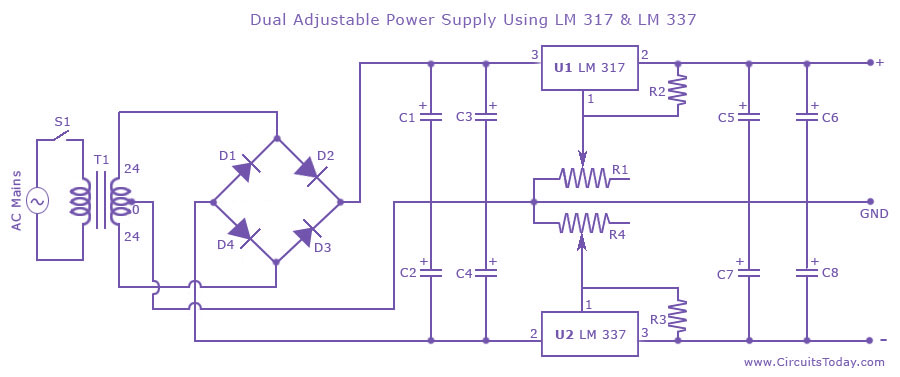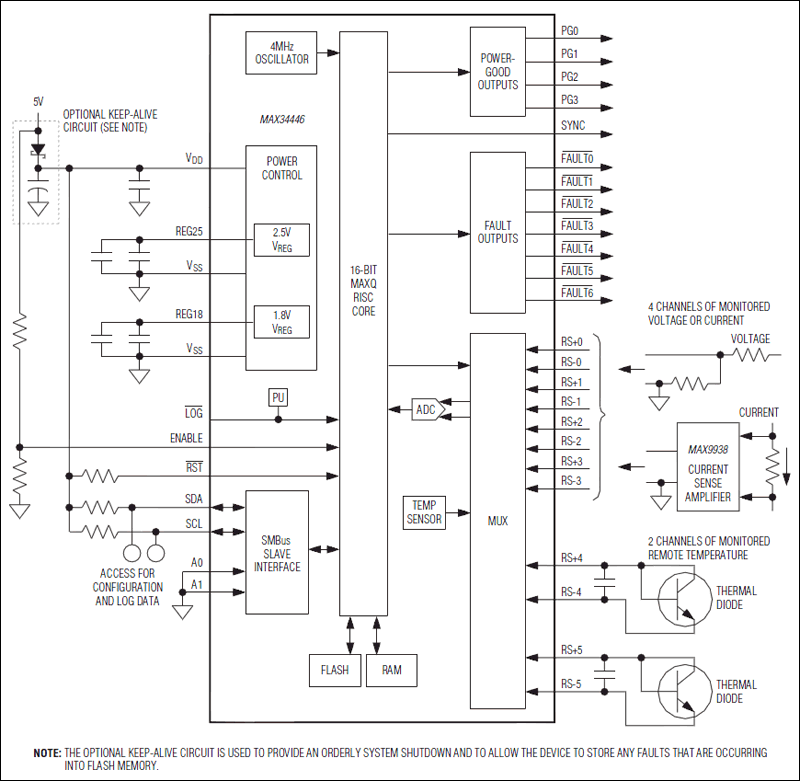
Floating 9V Supply For DVM Modules
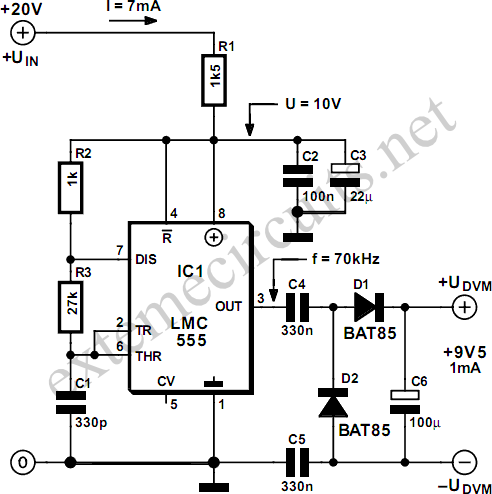
Most commercial digital voltmeter (DVM) modules with an LCD readout are powered by 9 volts and utilize an ICL7106 or similar analog-to-digital (A-D) converter chip. These modules are commonly employed in laboratory power supplies and other test and measurement equipment where a straightforward solution is required to achieve a voltmeter readout. In particular, in power supply units, the LCD module must float relative to the power supply unit (PSU) supply rails, necessitating a separate 9-volt power supply. While batteries can be an option, they have specific disadvantages. An alternative is a 9-volt converter that is effectively powered by the PSU while also floating, as described here. This converter is constructed using a widely available TLC555, LMC555, or 7555 timer integrated circuit (IC) configured as an astable multivibrator, generating a 70-kHz square wave that is input to a simple rectifier. Capacitors C5 and C6 provide the aforementioned electrical isolation between the PSU supply rails and the LCD module. The older bipolar NE555 IC is not suitable for this application due to its excessive load on the converter's own supply voltage. Depending on the specific type and brand of the CMOS 555 being utilized, resistor R6 may need to be adjusted slightly to ensure a supply voltage of approximately 10 volts at pins 8 and 4 of the IC. The converter's maximum output current is about 1 mA at an output voltage of 9.5 volts.
The described digital voltmeter (DVM) module represents a practical solution for integrating an LCD readout into various test and measurement equipment. The use of the ICL7106 A-D converter chip facilitates accurate voltage measurements, essential for laboratory and industrial applications. The necessity for the LCD module to float relative to the PSU supply rails is a critical design consideration, ensuring that the voltmeter can operate independently from the power supply's ground reference.
The astable multivibrator configuration of the TLC555, LMC555, or 7555 timer IC is a robust choice for generating a stable square wave signal. Operating at 70 kHz, this square wave is suitable for rectification and subsequent voltage regulation. The rectifier circuit, likely composed of diodes, converts the AC square wave into a pulsating DC voltage, which is then smoothed by the capacitors C5 and C6. These capacitors not only serve to filter the rectified output but also provide the necessary isolation, protecting the DVM module from fluctuations in the PSU supply voltage.
The recommendation against using the older NE555 IC is significant, as its higher current draw could compromise the performance of the voltage converter. The adjustment of resistor R6 is a crucial step in ensuring that the CMOS 555 operates within its optimal voltage range, allowing for reliable performance. The output current specification of 1 mA at 9.5 volts indicates that the converter is designed to meet the power requirements of the LCD module effectively while maintaining efficiency.
In summary, this circuit design exemplifies a well-considered approach to integrating a digital voltmeter into power supply systems, emphasizing the importance of electrical isolation, component selection, and circuit stability.Most commercial DVM modules with an LCD readout are 9-V powered and based on an ICL7106 or similar A-D converter chip. These modules are typically used in laboratory power supplies and other test and measurement equipment where a drop-in solution needs to be found to realize a voltmeter readout.
Particularly in power supply units, the LCD module w ill need to float` relative to the PSU supply rails, and this inevitably requires a separate 9-volt power supply. In some cases, batteries may be used but these have distinct advantages. The alternative, a 9-V converter effectively powered by the PSU and yet‚oating, is shown here. It is built from the ubiquitous TLC555, LMC555 or 7555) timer IC acting in astable multivibrator conguration producing a 70-kHz square wave fed into a simple rectifier.
In essence, capacitors C5 and C6 afford the above mentioned electrical isolation between the PSU supply rails and the LCD module. The old, bipolar NE555 IC should not be used here because it presents a too heavy loads on the converter`s own supply voltage.
Depending on the exact type and brand of the CMOS 555 you`re using, resistor R6 may need to be redimensioned a bit to ensure a supply voltage of about 10 volts at pins 8 and 4 of the chip. At an output voltage of 9. 5 V, the maximum output current of the converter s about 1 mA. 🔗 External reference
The described digital voltmeter (DVM) module represents a practical solution for integrating an LCD readout into various test and measurement equipment. The use of the ICL7106 A-D converter chip facilitates accurate voltage measurements, essential for laboratory and industrial applications. The necessity for the LCD module to float relative to the PSU supply rails is a critical design consideration, ensuring that the voltmeter can operate independently from the power supply's ground reference.
The astable multivibrator configuration of the TLC555, LMC555, or 7555 timer IC is a robust choice for generating a stable square wave signal. Operating at 70 kHz, this square wave is suitable for rectification and subsequent voltage regulation. The rectifier circuit, likely composed of diodes, converts the AC square wave into a pulsating DC voltage, which is then smoothed by the capacitors C5 and C6. These capacitors not only serve to filter the rectified output but also provide the necessary isolation, protecting the DVM module from fluctuations in the PSU supply voltage.
The recommendation against using the older NE555 IC is significant, as its higher current draw could compromise the performance of the voltage converter. The adjustment of resistor R6 is a crucial step in ensuring that the CMOS 555 operates within its optimal voltage range, allowing for reliable performance. The output current specification of 1 mA at 9.5 volts indicates that the converter is designed to meet the power requirements of the LCD module effectively while maintaining efficiency.
In summary, this circuit design exemplifies a well-considered approach to integrating a digital voltmeter into power supply systems, emphasizing the importance of electrical isolation, component selection, and circuit stability.Most commercial DVM modules with an LCD readout are 9-V powered and based on an ICL7106 or similar A-D converter chip. These modules are typically used in laboratory power supplies and other test and measurement equipment where a drop-in solution needs to be found to realize a voltmeter readout.
Particularly in power supply units, the LCD module w ill need to float` relative to the PSU supply rails, and this inevitably requires a separate 9-volt power supply. In some cases, batteries may be used but these have distinct advantages. The alternative, a 9-V converter effectively powered by the PSU and yet‚oating, is shown here. It is built from the ubiquitous TLC555, LMC555 or 7555) timer IC acting in astable multivibrator conguration producing a 70-kHz square wave fed into a simple rectifier.
In essence, capacitors C5 and C6 afford the above mentioned electrical isolation between the PSU supply rails and the LCD module. The old, bipolar NE555 IC should not be used here because it presents a too heavy loads on the converter`s own supply voltage.
Depending on the exact type and brand of the CMOS 555 you`re using, resistor R6 may need to be redimensioned a bit to ensure a supply voltage of about 10 volts at pins 8 and 4 of the chip. At an output voltage of 9. 5 V, the maximum output current of the converter s about 1 mA. 🔗 External reference
